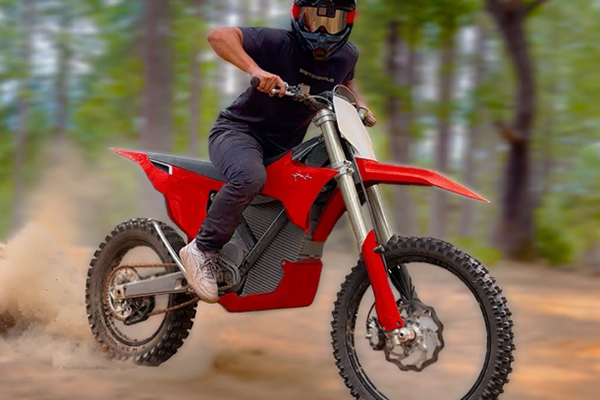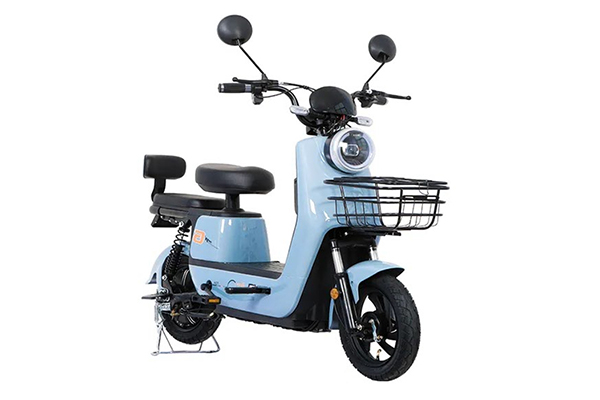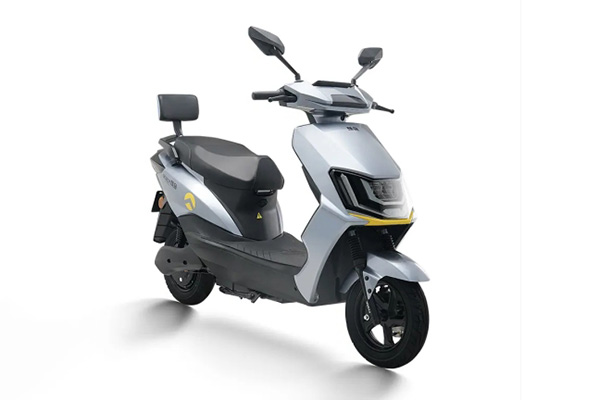Hello David, it’s Allen. In our last call, you mentioned the growing demand in the US market for high-performance electric vehicles, particularly in the off-road segment. This is a trend we’re seeing globally from our manufacturing standpoint here in China. Your customers are no longer just looking for a simple e-bike; they’re craving power, speed, and cutting-edge technology. This article is for you and your team. We will dive deep into the world of the fastest electric dirt bike models, exploring what makes them tick, who the key players are, and what you, as a distributor, should look for. Understanding this niche is crucial for staying ahead of the competition. Let’s explore the raw power and incredible engineering behind the machines that are redefining the off-road ride.
What Truly Defines a “Fast” Electric Dirt Bike?
When your customers ask for the “fastest“ machine, they’re often thinking about one number: the top speed. While that’s an important metric, a truly fast electric dirt bike is defined by a more complex interplay of factors. From our perspective as manufacturers, we focus on a holistic performance package. It’s about how quickly the bike gets to its top speed (acceleration), how it handles in corners, and how the suspension absorbs rough terrain to maintain momentum. The ability to deliver instant torque is a hallmark of electric technology, allowing a rider to power out of a corner or up a steep incline in a way that many gas-powered bikes can’t.
Think about it this way: a bike that hits 70 mph on a flat, straight line but handles poorly on a trail isn’t truly “fast” in a real-world scenario. The best machines balance raw power with responsive handling, a robust chassis, and a sophisticated power delivery system. We design and test for these characteristics constantly. The goal is to create a riding experience that is not just fast, but also intuitive and confidence-inspiring. The overall riding dynamics are what separate a good e-bike from a great one. This is the difference between a simple spec sheet and a machine that wins races.
Furthermore, the concept of “fast” is also about the variety of riding modes. A top-tier electric dirt bike allows the user to tailor the power output. A beginner might use a low-power mode that mimics a 125cc bike, while an expert can unleash the full potential, equivalent to a 650cc beast. This adaptability makes the e-bike incredibly versatile. It’s this combination of raw performance, refined handling, and smart technology that truly defines the modern, fastest electric dirt machine.
How Much Speed Can an Electric Dirt Bike Really Handle?
This is the question on every enthusiast’s mind. The answer is, frankly, astounding. The top tier of high-speed electric dirt bikes can not only match but often outperform their gas-powered counterparts. We’re no longer talking about glorified mountain bikes; these are serious performance machines. For instance, some of the most advanced models on the market can achieve a top speed well over 70 mph, with some claiming numbers closer to 80 mph in optimal conditions. This level of performance places them squarely in the territory of competitive motocross bikes.
The key is not just the motor, but the entire system working in harmony. A powerful brushless DC motor provides the raw force, but it’s the controller, the battery‘s discharge rate, and the gearing that determine how that power is translated into ground speed. As a manufacturer, we source and integrate these components to create a balanced system. For example, a high-voltage system, often 72v or more, is critical for achieving these speeds efficiently without overheating.
Here is a quick comparison of what you might see in the market:
| Performance Tier | Typical Top Speed | Key Features |
|---|---|---|
| Entry-Level | 30-45 mph | Lower power motor, smaller battery |
| Mid-Range | 45-60 mph | Upgraded motor, better suspension |
| High-Performance | 60-80+ mph | High-voltage battery, advanced controller, top-tier suspension |
It’s important to note that many of these bikes are designed for closed-course or off-road use only. The sheer power and speed they possess mean they require skill and a safe environment to operate. For a distributor like you, David, it’s vital to communicate this to your dealers and end-users. The performance is there, but so is the responsibility.

The Stark Varg: Is it the Undisputed King of Speed?
When you talk about the world’s fastest electric dirt bike, one name inevitably comes up: the Stark Varg. This machine made huge waves in the industry, and for good reason. It was designed with a single goal: to be the ultimate motocross weapon. The Stark Varg claims a peak power of 80hp, which is significantly more than a typical 450cc MX bike. This translates into blistering acceleration and a very high top speed.
The company claims its motor and battery design are revolutionary. The Stark Varg features a carbon fiber subframe and a honeycomb-structure battery case, making it both strong and lightweight. This focus on weight reduction is critical for its performance. What makes the Stark Varg so compelling is not just its power, but its customizability. Through a smartphone app, the rider can adjust power curves, engine braking, and traction control, effectively creating over 100 different ride modes. This bike could be a gentle trail machine one moment and a full-blown racer the next.
However, as a manufacturer, I always advise a balanced view. While the Stark Varg has incredible on-paper specs and has proven itself in many tests, the title of “fastest“ can be subjective. Factors like track conditions, rider skill, and specific setup all play a role. It is undoubtedly one of the fastest and most advanced electric dirt bikes ever made, setting a very high bar for the competition. Its existence has pushed the entire industry, including us, to innovate and develop even more capable and powerful machines.
Who are the Main Challengers for the Title of Fastest Electric Dirt Bike?
While the Stark Varg gets a lot of headlines, the market for high-speed electric dirt bikes is fiercely competitive. Several other brands produce machines that are serious contenders, each with its own philosophy on how to achieve the ultimate ride. For your business, David, knowing these names is key to offering a diverse and competitive product line. One of the most prominent names is E Ride Pro. The E Ride Pro SS is a beast of a machine, known for its raw power and explosive acceleration. It’s a favorite among enthusiasts who love to upgrade and tinker with their bikes.
The E Ride Pro focuses on a massive power-to-weight ratio. With a powerful motor and a high-discharge 72v battery, it’s built for thrilling, aggressive riding. It’s a bit more of a raw experience compared to the highly polished Stark Varg, but that’s part of its appeal for a certain segment of the market. Another major player is Talaria. The Talaria Sting R is an evolution of the popular Sur-Ron platform but with more power and better components. It’s a fantastic all-rounder that offers a great balance of agility, power, and durability, making it a very attractive option. The Rawrr Mantis is another exciting entry, often praised for its excellent suspension and robust build.
Then you have specialized brands like Arctic Leopard, which focuses on creating extremely lightweight yet powerful bikes, particularly for enduro and trials-style riding. Their engineering is focused on nimbleness and control. The RFN Ares Rally DLX, often marketed under different names like Rawrr, is another notable model that utilizes a powerful 12kw motor and quality suspension components like a Fastace fork. These brands prove there isn’t one single “best” bike. The best choice depends on the rider’s style, budget, and intended use. The Rawrr is a great example of a bike that provides a competitive package.

Why is the Battery the Heart of a High-Speed E-Bike?
You can have the most powerful motor in the world, but without a great battery, it’s useless. The battery is truly the heart of any electric dirt bike. It dictates not only the range (miles per charge) but also the bike’s ability to deliver peak power. For high-performance applications, it’s all about the discharge rate, often referred to as the “C-rating.” A high discharge rate allows the battery to release a massive amount of energy quickly, which is essential for the kind of explosive acceleration these bikes are known for.
From a manufacturing perspective, battery safety and quality are our absolute top priorities. We work with leading cell suppliers and design our own Battery Management Systems (BMS) to ensure reliability and longevity. A good BMS protects against over-charging, over-discharging, and overheating, which are critical for both performance and safety, especially in a demanding off-road environment. The battery capacity, measured in Amp-hours (Ah) or Watt-hours (Wh), determines the bike’s range. For example, a bike might offer 25 miles per charge under aggressive use, but that can vary wildly depending on terrain and riding style.
The physical design of the battery pack is also crucial. It needs to be robust enough to handle jumps and impacts, and its placement within the frame affects the bike’s center of gravity and handling. We invest heavily in designing housings that are both strong and as lightweight as possible. This is an area where you see a lot of innovation, with brands using advanced materials and cooling solutions. For your customers, a high-quality battery from a reputable brand means a more thrilling ride and a longer-lasting investment. It’s also important to have a good ebike controller to manage the power flow effectively.
Lightweight vs. Power: What is the Critical Trade-off in E-Bike Design?
This is the classic engineering dilemma that we face every day in our factory: the quest for more power versus the need to reduce weight. Every component adds weight, and in the world of performance riding, weight is the enemy. A lightweight electric dirt bike is more agile, easier to handle in tight sections, and requires less energy to accelerate and brake. It also puts less strain on the suspension and tire components.
The challenge is that the most powerful components—the motor and especially the battery—are also the heaviest. Adding more battery capacity for longer range directly translates to more weight. A bigger, more powerful motor also adds to the overall mass. The magic is in finding the perfect balance for the bike’s intended purpose. An MX race bike might prioritize power and be heavier, while a trail or enduro bike might sacrifice some peak power for a more nimble, lightweight feel.
Here’s how we approach it:
- Frame Material: Using materials like aluminum alloys or even carbon fiber to reduce frame weight without compromising strength.
- Component Selection: Choosing lightweight components, from the handlebars and wheels to the swingarm.
- Motor Design: Modern brushless motors are becoming increasingly power-dense, meaning they offer more power for their weight.
- Battery Engineering: The Stark Varg is a prime example of innovative battery design, using the casing as a stressed member of the frame to save weight. This is a level of integration we are also pursuing in our new models.
For your customers, understanding this trade-off is important. The lightweight electric dirt bike a customer wants might be the Rawrr Mantis or Arctic Leopard, which are praised for their flickability. Another customer, focused purely on drag races, might prefer a heavier but more powerful machine like the E Ride Pro SS.

Can You Trust the Safety of High-Speed Electric Dirt Bikes?
This is a critical question, David, and one you will surely get from your more discerning customers. The answer is a resounding yes, provided the bike is from a reputable manufacturer. As the speeds and power levels have increased, so has the focus on safety and a quality ride. We cannot simply put a powerful motor on a standard frame and call it a day. The entire platform must be engineered to handle the stress. This starts with the braking system. High-performance electric dirt bikes are equipped with powerful hydraulic disc brake systems, often with large rotors and multi-piston calipers, to provide strong, reliable stopping power.
The suspension is another non-negotiable area. You’ll see top-tier, fully adjustable suspension components from well-known brands on these bikes. A good fork and rear shock are essential not just for comfort, but for keeping the tires in contact with the ground over rough terrain, which is fundamental to control and safety. We often see components like a Fastace fork or other comparable brands on high-end models. Frame rigidity and durability are also paramount. We use computer-aided design and rigorous physical testing to ensure our frames can withstand the immense forces generated during aggressive off-road riding.
Finally, the electronic systems themselves have built-in safety features. The BMS in the battery prevents dangerous thermal events, and the motor controller often has temperature sensors to prevent overheating. The availability of different riding modes is also a safety feature, allowing a new electric cycle rider to get accustomed to the bike’s power in a controlled manner. When you’re evaluating a new electric dirt bike for your portfolio, always scrutinize the quality of the brakes, suspension, and frame. These are the components that ensure the rider can safely manage the bike’s incredible performance.
How Does the Acceleration of an Electric Dirt Bike Feel Compared to Gas?
This is where electric truly shines and offers a fundamentally different experience. The defining characteristic of an electric motor is its ability to produce peak power and torque almost instantly. On a gas motorcycle, power builds as the engine’s RPMs increase. There’s a curve. On an electric dirt bike, you twist the throttle, and you get 100% of the available torque from zero RPM. This results in breathtaking, silent acceleration that can often surprise even experienced riders of gas-powered models.
This instant torque is a massive advantage on the track and trail. It allows a rider to leap over obstacles, rocket out of slow corners, and conquer steep hills with an ease that is hard to replicate on a gas bike. In head-to-head drag races, it’s not uncommon for an electric dirt bike to get the jump on a comparable gas bike off the line. The power delivery is also incredibly smooth and linear, without the vibrations and gear shifts of an internal combustion engine. This reduces rider fatigue and allows for more precise throttle control.
However, this raw power requires respect. The instant response can be jarring for beginners, which is why the adjustable riding modes are so important. They allow the user to tame the power delivery, making it softer and more progressive until they are comfortable with the bike’s capabilities. For your customers, this unique feeling of silent, instant, and overwhelming acceleration is one of the biggest selling points of a performance e-bike. The E Ride Pro is a model frequently praised for this exact characteristic.
What Upgrades Can Boost an Electric Dirt Bike’s Performance?
For many enthusiasts, the stock bike is just the beginning. The upgrade market for electric bikes is booming, and it’s an excellent opportunity for aftermarket sales. One of the most common upgrades is the controller. An aftermarket controller can unlock more power from the stock motor and battery, allowing for higher amperage draw, which results in faster acceleration and a higher top speed. This is a very popular upgrade for bikes like the Talaria Sting R and the Rawrr Mantis.
Another area for improvement is the suspension. While stock suspension on high-end bikes is good, a professional racer or serious enthusiast might upgrade to a custom-tuned fork and shock for superior performance tailored to their weight and riding style. Wheels and tires are also common upgrades. Lighter, stronger wheels can improve handling and suspension response, while choosing the right tire for the specific terrain can make a massive difference in traction and control. We ensure our bikes, like our high speed electric ebike, are built on a solid platform that allows for such modifications.
Other popular modifications include:
- Brakes: Larger rotors or higher-performance calipers for even more stopping power.
- Ergonomics: Different handlebars, footpegs, and seats to customize the fit for the rider.
- Gearing: Changing the sprocket sizes to trade top speed for more low-end torque, or vice versa.
- Battery: In some cases, riders might install a higher-voltage or higher-capacity custom battery, though this is a complex upgrade that requires significant technical expertise. We see this often with the E Ride Pro community.
Encouraging this customization culture can build a loyal customer base. By offering a solid base model and a selection of quality upgrade parts, you can cater to both the out-of-the-box rider and the dedicated tinkerer. Using quality components like durable durable tubeless tires from the start gives customers a great foundation.
The Future is Electric: What’s Next for High-Speed Off-Road Riding?
David, the pace of innovation in this sector is incredible. What we consider the “world’s fastest“ today might be standard tomorrow. From our vantage point in manufacturing, we see several key trends shaping the future of the fastest electric dirt bike. First and foremost is battery technology. We are on the cusp of new solid-state battery chemistries that promise higher energy density (more range in a lighter package), faster charging, and even greater safety. This will be a game-changer.
We’re also seeing more intelligent and integrated electronics. Imagine a bike offers suspension that actively adjusts itself in real-time based on the terrain, or traction control systems that use machine learning to adapt to a rider’s style. The regen (regenerative braking) systems will also become more efficient, capturing more energy during deceleration to extend the ride. This level of sophistication, once reserved for MotoGP bikes, is trickling down to the consumer e-bike market. The kw and nm figures will continue to climb, but the real progress will be in how intelligently that power is managed.
Finally, we anticipate more specialization. The market is maturing beyond “one-size-fits-all” models. We’ll see more purpose-built machines, from the ultra-lightweight enduro weapon like the Arctic Leopard to the dedicated MX powerhouse. There may even be more diversification into vehicles like the YONSLAND X9 new 3wheels ebike, applying this technology to different formats. For your business, the key will be to stay informed, partner with forward-thinking manufacturers, and continue to educate your customers on the amazing potential of this technology. The electric revolution is not just coming; for the fastest dirt bike segment, it’s already here. The electric dirt bikes available today are just the beginning.
Key Takeaways for Your Business:
- “Fast” is a System: True performance isn’t just about top speed. It’s about acceleration, handling, and the quality of the components like the motor, battery, and suspension working together.
- Know the Key Players: Be familiar with benchmark models like the Stark Varg, but also with strong competitors like E Ride Pro, Talaria, and Rawrr to offer a diverse portfolio.
- The Battery is Paramount: The quality, capacity, and discharge rate of the battery define the bike’s performance and range. This is a key selling point and a critical area for quality control.
- Safety Through Engineering: High speed demands high-quality safety features. Emphasize the quality of the brakes, suspension, and frame construction to build customer trust.
- Instant Torque is the Electric Advantage: The unique feel of immediate acceleration is a defining feature and a major reason why electric can outperform gas-powered models in many scenarios.
- The Future is Bright: Stay ahead of the curve by understanding upcoming trends in battery technology, intelligent electronics, and vehicle specialization. The market for the lightweight electric dirt bike will only continue to grow.
Post time: Aug-11-2025




